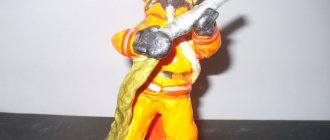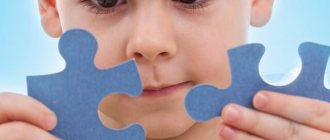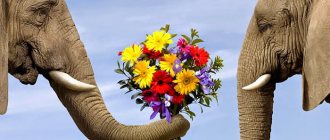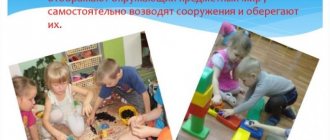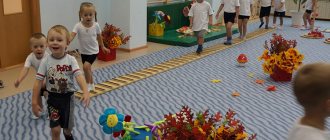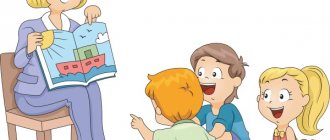Introduction
Sports games represent a very important section in a number of means of physical education for preschoolers.
They should help consolidate and improve the exercises they have learned or solve independent tasks to develop physical qualities.
Outdoor and sports games strengthen the child’s health, develop motor qualities and skills, improve the rhythm and accuracy of movements, improve the functioning of the body’s main physiological systems - nervous, cardiovascular, respiratory, improve the physical development of children, and cultivate moral and volitional qualities. It is very valuable that playing sports and playing sports contribute to the development of positive character traits in preschoolers and create favorable conditions for the development of friendly relations in the team. In summer and winter they are carried out outdoors, which is an effective means of hardening a child.
Play , the most important activity of a child, plays a huge role in the physical development and upbringing of a child. This is an effective means of shaping the personality of a preschooler, his moral, volitional and physical qualities. The educational value of the game largely depends on the professional skills of the trainer-educator, on his knowledge of the psychology of the child, taking into account his age and individual characteristics, on the correct methodological guidance of student relationships, on the clear organization and conduct of possible games.
Especially exceptional conditions for the development of physical qualities, outdoor games reveal the true character of the child. It is here that collectivism, perseverance, perseverance, courage and honesty are acquired, and the formation of a person’s spiritual and physical qualities occurs. In addition, outdoor games serve as a means of aesthetic education.
Outdoor games with elements of sports are included in the current physical education program of all educational institutions, including kindergartens.
Conditions for conducting sports games in kindergarten
Outdoor and sports games are carried out during physical education lessons, as well as during walks. For each month, 3-4 new games and repetition of 4-5 already familiar outdoor games are planned. The new game is explained to children both in class and during walks. The teacher must clearly explain the content and rules of the game, show where the players should be and how to act. During walks, the teacher systematically organizes individual play exercises to teach children basic movements (for example, stand like a heron - stand on one leg on a stump, on the edge of a sandbox; overcome an obstacle - climb a gymnastic ladder, climb over to its opposite side and go down).
In order for children to learn to play independently, games should be repeated (learn the rules of the game, techniques for performing game actions). Children should be encouraged in every possible way to organize games themselves, make additions and complications to their rules, introduce new roles, and create games based on the content of familiar fairy tales and poems. It is necessary to satisfy children's interest in their favorite games by offering them new gaming paraphernalia and sports equipment. The teacher can be directly involved in the game or observe the players, giving instructions during the game. Knowing the individual characteristics of children, the teacher regulates their physical activity and evaluates their actions differently. Sedentary children are entrusted with leading roles and are involved in special exercises, praised for a well-completed task and determination; restrains easy excitability, reminds you to follow the rules.
Considering that children of this age are interested not only in the process of performing a movement, but also in the quality and result of the exercises, the teacher should facilitate the organization of games with elements of competition. To implement them, a variety of exercises are selected according to the physical education program, accessible, interesting for children and corresponding to their physical capabilities. The number of exercises for six-year-old children in one game increases to 8-9 and can include basic movements, elements of sports games and exercises, actions with various toys and aids. The tasks should not be too easy, otherwise children will be less interested in completing them, and they should not be too difficult, which can cause feelings of insecurity. It is necessary to select pairs, teams, groups of participants so that each of them has sedentary and active children, which would give each team equal opportunities to achieve success. It is very important that during the game, children get used to helping the leaders, saving their comrades from difficult situations, and maintaining friendly relations with a peer who wins the game.
Particular attention should be paid to equipping an indoor sports area so that in their free time children can organize games themselves. Children are given balls, jump ropes, cubes, hoops, flags, ribbons, ring throws, bowls, skittles, sandbags, ropes of different lengths, flat devices (squares, plywood circles).
Physical education festivals are a unique form of demonstrating children’s achievements in various types of movements, in the manifestation of such qualities as speed, agility, courage, and in the use of self-organization skills. They are held 3-4 times a year, lasting up to one and a half hours and, as a rule, are associated with seasons. For example, a winter holiday is associated with saying goodbye to winter, and a summer holiday can be timed to coincide with the end of the school year or Children's Day.
